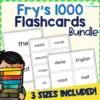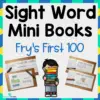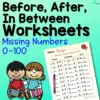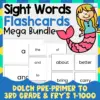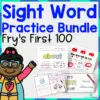With dozens of books published under his name, Dr. Seuss’s works have become a classic in children’s literature. Young ones have enjoyed and loved the different characters in his stories.
Turn children’s fascination with Dr. Seuss with these worksheets that will help develop different skills while having fun.
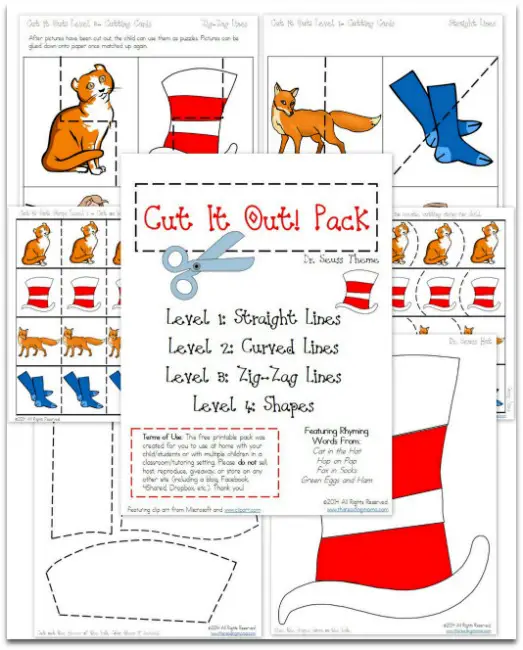
Children with different cutting skills can enjoy this set of cutting activities with twelve pages. Working with these pages will help improve children’s fine motor, directionality, and eye-hand coordination skills.
These are perfect for an extension activity after reading Dr. Seuss’s books. Have the children name the pictures to help increase their vocabulary.
The site suggests using the cut-up shapes and pictures in puzzles or pasting them on paper. Doing this will enhance children’s visual-perceptual skills, attention to detail, and perseverance.
Download and print the free cut-it-out pack from the site. Choose the appropriate worksheet for every child’s cutting skills. Have a look at the pictures. Explain that they need to cut through the broken lines.
These lines can be straight, zig-zag, curvy, and form shapes. Have the children play with the large pictures by putting them together like a puzzle. Use the smaller ones as cards to teach patterns.
For this activity, you will need:
- Scissors
- Printed pack
For more information on this activity, go to ThisReadingMama.com.
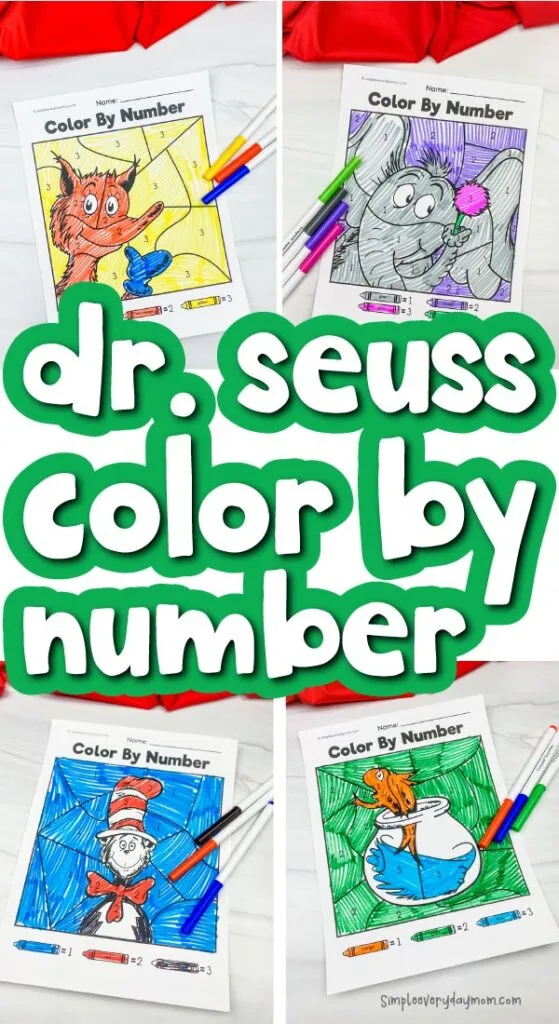
These worksheets will help children learn number and color recognition skills. Coloring within the lines will help improve their fine motor and eye-hand coordination skills.
These are perfect for early finisher’s tasks or literacy bags that children can work on after reading the book. These worksheets are inspired by Dr. Seuss’s books “Horton Hears A Who!” “Fox in Socks,” and “The Cat in the Hat.”
Download and print the free coloring worksheets from the site. Choose a page for children to work on, preferably one that matches the story they have just read.
Explain that the crayons at the bottom of the page represent the color that they will need to use. They have to find the number on the picture and color that section ultimately.
Have them use crayons or markers for this activity. Once finished, use their work to discuss the characters from the story. Have them explain what makes these characters unique to help improve their oral language skills.
For this activity, you will need:
- Printed coloring sheets
- Crayons or markers
For more information on this activity, go to SimpleEverydayMom.com.
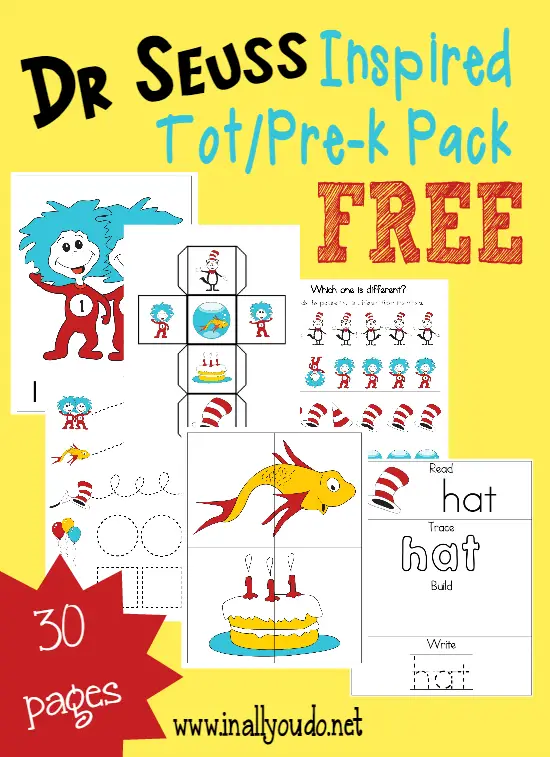
Engage young children in a literacy activity that will allow them to develop a habit of reading with these Dr. Seuss-inspired emergent readers. These mini-books contain words and illustrations based on the author’s works.
These mini-books are differentiated to fit every emergent reader’s skill level. Each book has six pages. They have identical illustrations but are worded differently.
The first version has one word for every page that tells what the illustration is. The second version has a simple sentence. The third version has dotted letters for tracing. The final version requires children to write the missing word.
This literacy activity will help children with letter and word recognition and writing skills and teaches comprehension.
Download and print the free emergent readers from the site. Choose the version that fits the child’s skill level. Cut the pages and staple them together to form a mini book. Assist the children as they read the book.
For this activity, you will need:
- Printed emergent reader minibooks
- Scissors
- Stapler
For more information on this activity, go to InAllYouDo.net.
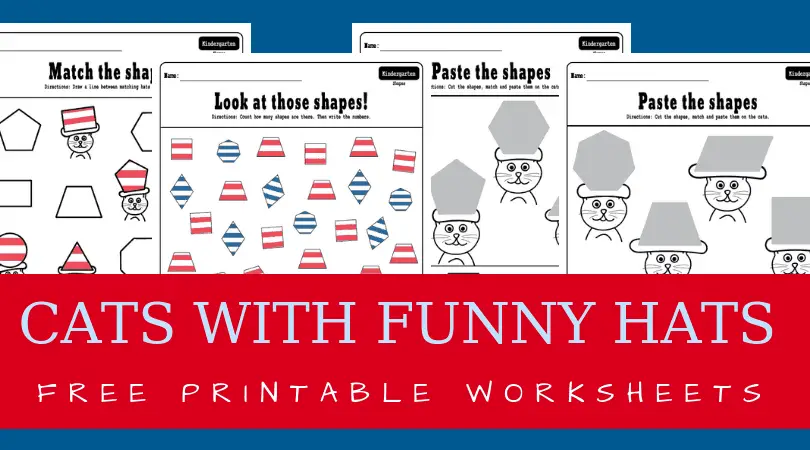
Learn essential numeracy skills with these worksheets inspired by Dr. Seuss’s book “The Cat in the Hat.” Children will learn shape recognition, counting, fine motor, and matching skills.
It will also allow them to develop hand-eye coordination, visual-perceptual skills, and attention to detail.
This free worksheet can be downloaded from the site. Print these and provide children with the materials to complete the task. There are four pages in this set of printables.
One requires children to match by drawing lines, while the other two are designed as cut-and-paste activities.
For the counting worksheet, have children count the number of shapes on the first page. Let them look at the shapes on the bottom part of the worksheet. Point out the square, diamond, trapezoid, and heptagon.
Ask them to find and count the number of identical shapes and write the number on the blank. Children may cross out the counted shapes to help them from getting confused.
For this activity, you will need:
- Printed funny hats worksheet
- Scissors
- Pencil or marker
- Glue
For more information on this activity, go to PlanesAndBalloons.com.
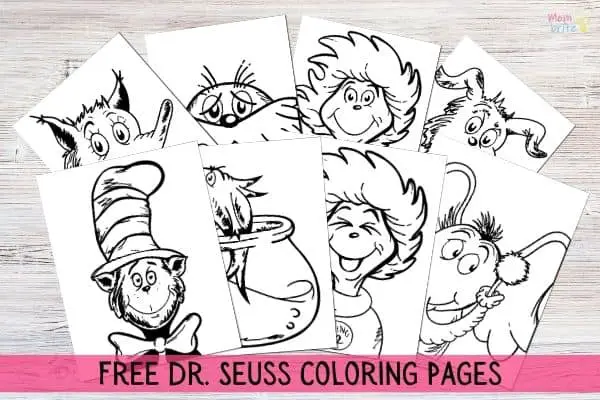
This coloring page has eight pages that feature different characters from Dr. Seuss’s famous books. Children will learn color recognition skills and improve their fine motor skills as they work on these printables.
These are great activities for early finishers, in addition to literacy bags or for the book study. Use children’s finished work to discuss the story where the character was taken from.
This is an excellent opportunity to check comprehension, discuss the characters’ unique features, and learn more about each book’s story structure.
Download and print these coloring pages from the site. Have the children color this. If possible, use pictures or show the book as a reference for the colors. Some of the familiar characters are Cat in the Hat and Lorax.
Encourage children to color within the lines. Once finished, ask them about their favorite character and let them give reasons. Doing this will help develop oral language and reasoning skills.
For this activity, you will need:
- Coloring pages
- Crayons or markers
For more information on this activity, go to MomBrite.com.
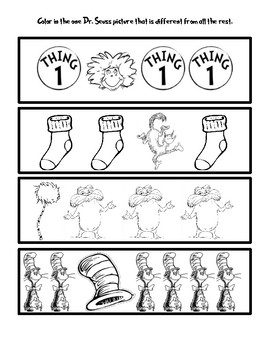
Here’s an activity that will help develop cognitive skills in young children. Identifying the differences in the group allows children to think critically, pay attention to details, and become familiar with the concept of similarities and differences.
This activity can also teach counting skills by letting children count the identical objects in each group. They can also identify which Dr. Seuss’s book the illustrations are from.
Have children name these pictures to help increase their vocabulary. They can also talk about their favorite book based on these pictures. Let them color the rest once they are finished answering to help improve their fine motor skills.
Download and print these free worksheets from the site. Ask children to look at the pictures on the first box and let them point out which is not the same as the others. Let them use a crayon or a marker to color the odd one out.
For this activity, you will need:
- Printed worksheets
- Crayon or markers
For more information on this activity, go to TeachersPayTeachers.com.
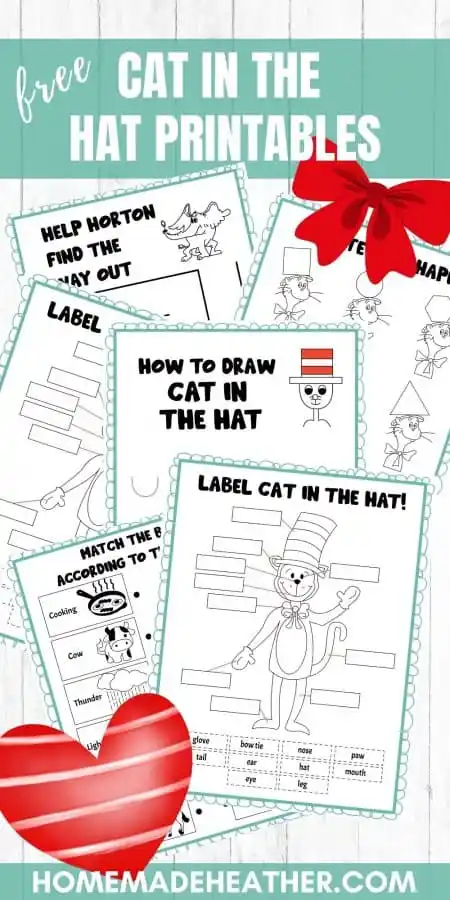
These printables inspired by Dr. Seuss’s “Cat in the Hat” book are perfect reading activities for children.
These worksheets may require children to label body parts, match the picture to its appropriate sound, find the matching shapes, solve a maze, and practice drawing. Children will learn essential skills with these worksheets.
Labeling tasks increase their vocabulary, solving the maze and matching identical shapes help improve visual-perceptual skills, and drawing helps with copying and imitation skills.
Find these free printables from the site. Download and print them. Choose one that fits the children’s skill level.
For the sound matching page, have children look at the pictures on the left side and read the sound words on the right. Ask them which sounds match the picture, and let them draw a line to connect them.
If possible, use a recorded sound for this activity. This worksheet is excellent for the sense of hearing lesson.
For this activity, you will need:
- Crayons or markers
- Printed activity sheet
For more information on this activity, go to HomemadeHeather.com.
See more: Cat in the Hat Activities for Preschool
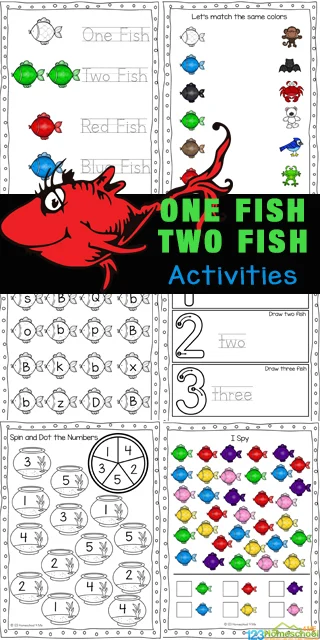
This set of worksheets, which aims to help children learn different literacy and numeracy skills, is inspired by the book “One Fish, Two Fish, Red Fish, Blue Fish” by Dr. Seuss. Use this for fish-themed lessons or to target specific skills.
Children may learn color, number, word, letter recognition, counting, tracing, and matching skills. These worksheets can be given to children individually as tabletop activities or printed and compiled as an activity book.
Download and print the free set of worksheets from the site. Choose one of the worksheets to practice a target skill. For example, use the “I Spy” worksheet as practice for counting and for learning about colors.
Ask children to look at the school of fish. Ask them to count the total number of fish of every color. Have them write the number in the box at the bottom of the page. There are six colors of fish that they need to count.
For this activity, you will need:
- Printed worksheets
- Pencil or crayon
For more information on this activity, go to 123Homeschool4Me.com.
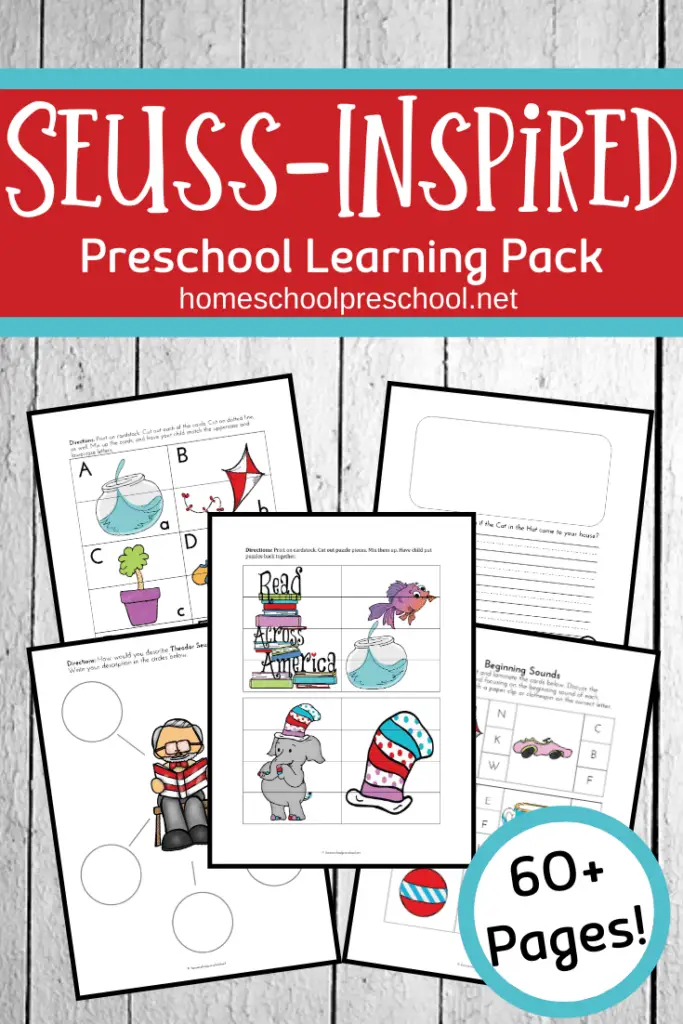
With more than sixty pages, this bundle inspired by Dr. Seuss’s books will excite children. There are puzzles, handwriting pages, letters and numbers sheets, story starters, concept maps, and many more.
Children will learn various skills, such as counting, number, letter, color recognition, fine motor, writing and tracing, and patterns.
These worksheets can be downloaded for free on the site. Print some of these for children to work on.
The “Read, Trace, Stamp, and Write” worksheet is perfect for children learning to spell words. This fun multi-sensory activity will help develop patience and strengthen hand and finger muscles.
Have them look at the picture and the spelling on the left side of the paper. Ask them to find the letter stamps that match the word.
Let them press these on the inkpad and stamp the letters on the second column to spell the word. Ask them to write the word on the third.
For this activity, you will need:
- Printed worksheets
- Pencil or marker
- Letter stamps
- Ink pad
For more information on this activity, go to HomeschoolPreschool.net.
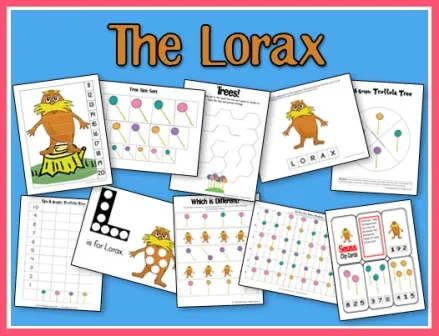
Two sets of worksheets are designed for children’s different skill levels- the preschool and tot packs, which are inspired by Dr. Seuss’s “The Lorax.”
The preschool is for children learning about letters and numbers, while the tot pack focuses on colors, counting, shapes, and sizes.
In the tot pack is a four-page activity called the “Truffula Tree Colors” for children to color. These pages can be cut and assembled into a color mini-book for learning about color recognition skills.
However, these pages can be modified and used differently to teach various skills. Use these as playdough mats to help improve children’s fine motor skills and strengthen their hand and finger muscles.
Let them press the corresponding color of play dough in each of the truffula trees.
These can also be used as counting mats. Have the children roll and make small balls of colored playdough to place on the truffle.
For this activity, you will need:
- Printed worksheet
- Crayons or markers
- Playdough
For more information on this activity, go to ATeachingMommy.com.
Conclusion
These worksheets are perfect for any of Dr. Seuss’s books. These are wonderful to use in teaching different skills and are differentiated to fit every child’s skill level.
These are perfect for use every second of March for Dr. Seuss Day and Read Across America Day. Thank you for reading. Come back and check out our other worksheet articles soon.


